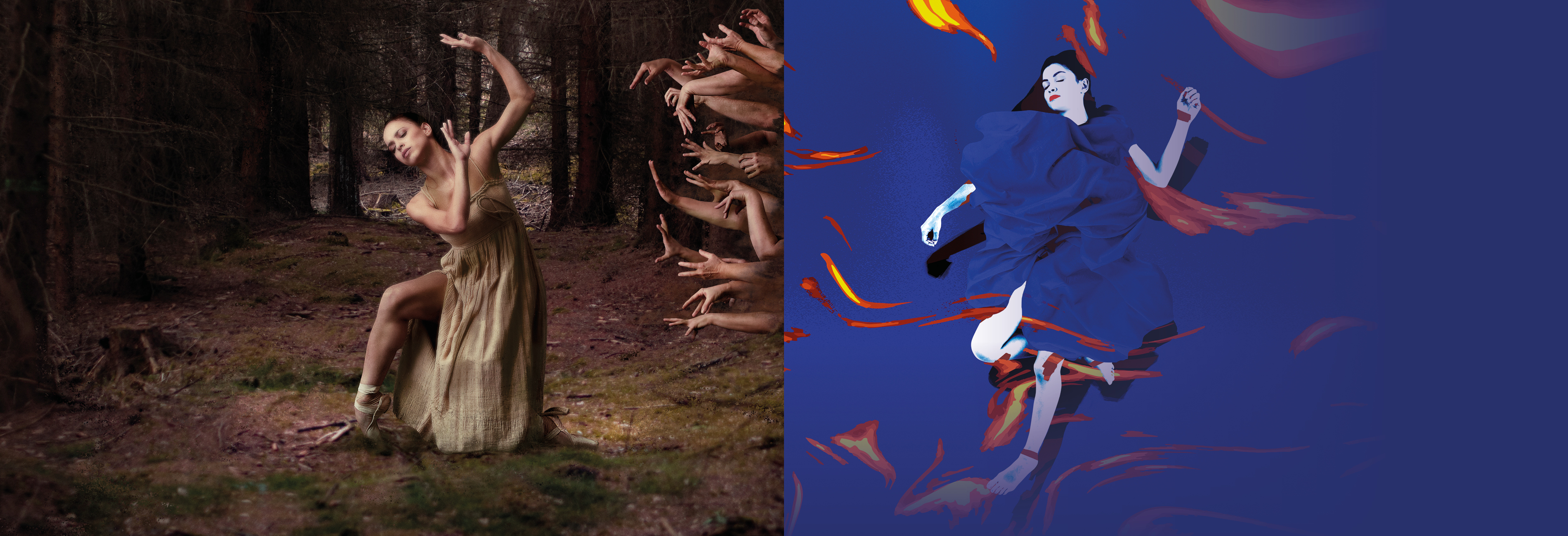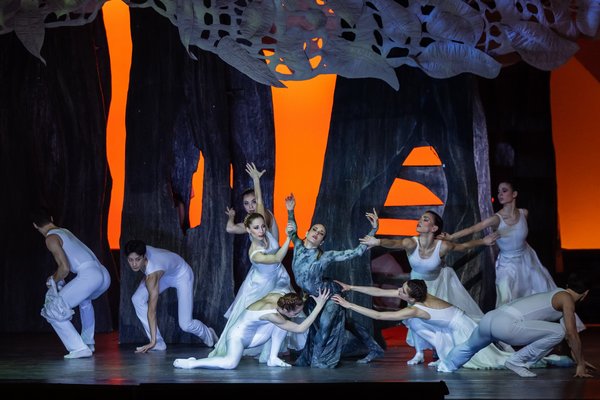
THE WOODEN PRINCE /
BLUEBEARD'S CASTLE
In Brief
THE WOODEN PRINCE (Premier)
“There is no date in the half-a-century history of our Opera House as important as the premier day of Béla Bartók’s first pantomime ballet The Wooden Prince on 12 May 1917. It was the first time that the Hungarian spirit, the genius of Vörösmarty, Petőfi and Ady’s nation was expressed in its true greatness and absolute authenticity in the music played in the Hungarian opera”, writes musicologist Aladár Tóth, who later became the director of the OPERA. The piece that has been part of the repertoire almost constantly in the 105 years passed since its original premier has been staged by several renowned choreographers. This mixture of a fairytale-like world of a forest and the realistically deep and human struggles of men and women, is brought to life in the 2022/23 season by László Velekei, ballet director of Győr Ballet.
Bluebeard's Castle
Béla Bartók’s one-act opera, Bluebeard’s Castle is an extraordinary and enigmatic work that, in terms of how it is interpreted and staged, poses an exciting challenge for directors, their creative teams and performers alike. Little wonder that it is such a popular work on opera schedules both in Hungary and abroad. This season, the OPERA returns to the production by internationally acclaimed Danish director Kasper Holten, who has worked on the stages of the Deutsche Oper Berlin, the Theater an der Wien, the Finnish National Opera, the Wiener Staatsoper, the Teatro alla Scala in Milan and the Bregenz Festival, among others. He also served as artistic director of London’s Royal Opera House until 2017. Moreover, it was in Budapest where he shot his 2010 opera film of Don Giovanni, titled Juan. His productions are characterised by simplified, and often monumental, sets and a harmonic balance between tradition and innovative ideas. “To read, listen think and feel. The important thing is to avoid analysing it according to any preconception or always employing the same artistic style, but rather to develop a relationship with the work so I can completely understand what it is about it that fascinates me so much. Only then can I get started on the aesthetics, the concept and so forth,” says Holten.
Synopsis
Standing on two adjacent hillocks are a pair of pretty castles belonging to the Prince and Princess: these are surrounded by a lush natural setting ruled over by the Fairy Witch. One beautiful morning, the Princess steps out of her castle to play, free from care. The Prince also leaves his castle to go out wandering. To prevent the two young people from meeting, the Fairy Witch orders the Princess to return to her castle, but the Prince sees her and falls in love with her at first sight. He attempts to get closer to his quarry, but the forest moves at the Fairy Witch’s command, and trees block his path. The prince finds his way through the thicket, so the Fairy Witch causes the waters to rise. The flow of the stream tears off his royal regalia and overpowers the Prince. As a consolation, the Fairy Witch carves a wooden copy of the boy and adorns it with his cloak and crown. The strange figure appeals to the Princess, upon whose arrival the Prince emerges from his grave amidst the waves to run to his chosen one.
The Fairy Witch performs her magic again, and her powers brings the Wooden Prince to life. It immediately launches into a grotesque dance, which succeeds in drawing the attention of the Princess. She joins the strange figure in his dance, and then she takes it back into her castle. The Prince watches the triumph of the Wooden Prince in sadness.
In his sorrow, the Prince finds solace in nature. The Fairy Witch crowns him king of the forest and orders the forces of nature to submit to him. Thus, the Princess is now more attracted to him especially as the power of the Wooden Prince is waning.
This time, the real Prince turns away from the Princess, and the forest and the magic of the Fairy Witch stand in her way. Unable to penetrate the thicket of trees, the Princess throws away her royal ornaments in shame and cuts her hair. The Prince and nature are finally reconciled, and the young people find each other. In the closing image of fulfilment, their happy duo is surrounded by the now quiet, protective nature.
Bluebeard's Castle
The protagonists of Béla Bartók and Béla Balázs’s symbolist opera are Bluebeard and his wife, Judith, who has left her family and her betrothed in order to follow her love. However, Bluebeard’s castle – that is, his soul – contains seven closed doors. Judith persuades her husband to open them, one after the other.
Behind the first door is the torture chamber, while the second leads to the armoury. Still unsatisfied, Judith wants to open the other doors in order to fill her beloved’s castle with light. Bluebeard gives her three more keys: the third is for the treasury, the fourth opens the door to the hidden garden. The treasure and the flowers, nevertheless, are bloody.
At her husband’s bidding, Judith also opens the fifth door, where Bluebeard’s realm shines with brilliant light. The clouds, however, cast dark shadows. Judith now wishes to look behind the “innermost” doors, but she asks Bluebeard in vain: she must not ask, but instead simply love him. Judith receives the sixth key, which opens the door to the lake of tears. From behind the final door emerge the three former wives. All goes dark.
